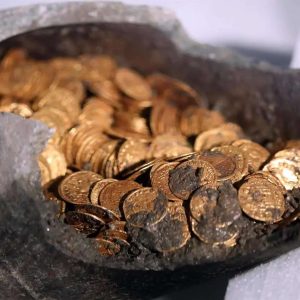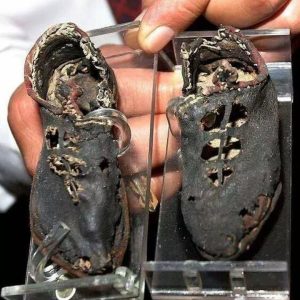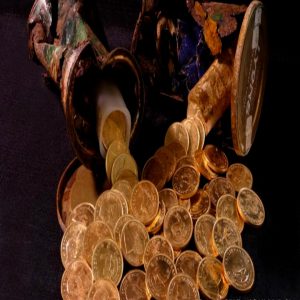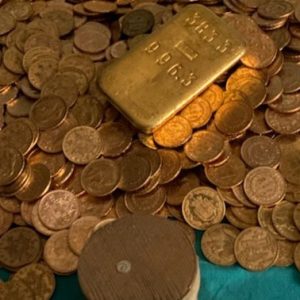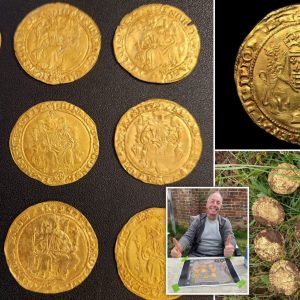Dopo la bellissima mostra del 2010 “Ori antichi della Romania. Prima e dopo Traiano” tenutasi presso il Museo dei Fori Imperiali a Roma, un’altra imperdibile occasione per ammirare degli splendidi reperti in grado di far ripercorrere la storia delle civiltà protostoriche, classiche, tardo-antiche e altomedievali che si succedettero nel corso dei secoli sul territorio dell’odierna Romania.
Indice dei contenuti
The exhibition
The Museo Arqueológico Nacional in Madrid hosts until on 27 February 2022 the exhibition “Tesoros arqueológicos de Rumanía. Las raíces dacias y romanas“(Archaeological treasures from Romania: Dacian and Roman roots) in commemoration of the 140th anniversary of the start of diplomatic relations between Spain and Romania.
It is a rather prestigious exhibition, the most important held abroad to date by the Muzeul Național de Istorie in României (National History Museum of Romania), in the last fifty years.

The exhibition brings together a magnificent selection of over 800 objects from 40 museums and institutions in Romania, in addition to loans from various Spanish museums, including the Archaeological Museum of Seville, the Ayuntamiento de Guadix (Granada) and the Prado National Museum.
These are items of exceptional value belonging to the European archaeological heritage, including a spectacular series of princely gold and silver treasures, as well as a wide variety of objects such as weapons, ceramic pottery, glass containers, precious clothing ornaments, stone and metal sculptures, coins and much more. All pieces that allow the knowledge of the different aspects related to daily life, to technological and economic development, to the system of beliefs and spirituality of the various societies that followed one another from the Iron Age to the Early Middle Ages on the Romanian territory, which testify to the evolution and the ability to generate new multicultural syntheses, influenced by the Balkan-Mediterranean and Germanic environment.
The exhibition, in fact, in addition to the documentary and archaeological aspect, allows you to appreciate the various connections established over the centuries between Eastern Europe and its extreme west, united as much by the heavy Roman heritage as by the presence of Celtic and Germanic populations. who contributed equally decisively to shaping this multifaceted identity.
The sections of the exhibition
The exhibition “Tesoros arqueológicos de Rumanía. Las raíces dacias y romanas“, curated by Ernest Oberländer-Târnoveanu and Andrés Carretero Pérez is developed in six sections that allow the visitor to discover the different ancient civilizations that have occurred in the Romanian territory (Greeks, Scythians, Sarmatians, Getae, Celts, Dacians, Romans, Goths) and embark on a fascinating journey through its history:
I – The first Iron Age (VII-VI century BC)
II – The Geto-Dacians and their neighbors (5th century BC – 1st century AD)
III – Pax Romana (I-III century AD)
IV – At the gates of the empire (1st-4th century AD)
V – The continuation of Roman life in Dacia (III-VII century AD)
VI – The Empire and the ‘barbarians’ (IV-VII century AD)

Section I – The first Iron Age (VII-VI century BC)
The section is entirely dedicated to the early Iron Age, when the indigenous culture of Basarabi, which developed in south-eastern Europe between the eighth and seventh centuries BC, allowed a first relevant connection between East and West, favoring the meeting more or less violent, between populations of different ethnic groups such as Dacians, Thracians, Pannonians, Illyrians and the populations of the steppes.
These contacts had a certain relevance both from a religious-cultural and socio-military aspect, as evidenced by some of the artefacts exposed: the statuette of the goddess Anahita, venerated in Persia; the funerary stele with a warrior armed with a dagger and akinakes (the traditional sword of the Scythians), or the various objects attributable to sacrificial rites or to the funeral environment.
Section II – The Geto-Dacians and their neighbors (5th century BC – 1st century AD)
The second part of the exhibition allows to deepen the formation and affirmation of the Geto-Dacian civilization, which shows the different influences generated by the prolonged contact with Scythians, Greeks, Celts, Thracians and other “barbaric” gentes who lived beyond across the Danube.

The Geto-Dacian society was somewhat hierarchical and highly militarized, just as the rich outfits exhibited testify, and which were once flaunted by its warrior elites.
In this section, the history of various sovereigns is also taken up, such as: Burebista (about 82-44 BC), the first who was able to unify the peoples of Dacia (which can be framed from today’s Moravia to the Bug river, from the Carpathians to Dionisopoli), Duras-Diurpaneo and his nephew Decebalus (1st century BC-106 AD), who found themselves negotiating and fighting strenuously against the progressive Roman advance camped first by Domitian (81-96 AD) and then by Trajan (98- 117 AD).
There were several reasons that prompted the Romans to promote the annexation of this territory within the Empire: the possibility of exploiting the very rich gold mines of the Carpathians, its key role in controlling the Danube and consequently also the flow of “Barbarians” from the east.



Section III – Pax Romana (I-III century AD)
The third section analyzes precisely the annexation of the territory within the Roman orbit and the creation of the Provinces of Dacia and Moesia Inferiore. Its progressive conquest began in 101 and ended under Trajan in 106, after a series of tragic military campaigns, the very ones that we can still see today represented on the Trajan’s Column in Rome, a work commissioned by the Emperor himself with the intention of commemorating his own triumph.
From that moment, on a strategic level, Dacia and Moesia Inferiore became in fact the new eastern limes of the Western Roman Empire and were heavily militarized for defensive purposes by the Hispanic emperors, Trajan and Hadrian (117-138 AD).
Progressive Romanization influenced the Dacians both under the cultic aspect, where they came to elaborate interesting religious syncretisms, and in their uses and customs, as some of the exhibits suggest.
From a political point of view, however, Roman domination lasted only a couple of centuries, until the third century, when the Danube was overwhelmed by the very first “barbarian invasions”, but its presence had a profound impact on the entire history of the territory.


Section IV – At the gates of the empire (1st-4th century AD)
This section is dedicated to all those populations who were stationed along the borders and in the Dacian territory, in the areas that were once occupied by the Geto-Dacians, and focuses on the changes implemented after the Romanization took place.
Through various objects, such as weapons, jewels or everyday objects, the characteristics of the material culture of both the Dacians settled in north-western Romania – with their processes of assimilation and/or coexistence with elements of Germanic origin – are illustrated. they lived in the easternmost borders, organized in strong tribal unions, which were affected by contacts with the Roman, Germanic and Sarmatian world.

Starting from the first century AD, with the authorization of the Roman Empire, the Iazigi (to the west) and the Roxolani (to the east), two Sarmatian groups, a population of Iranian origins, arrived in Dacia.
Archaeologically, the Sarmatians are known above all thanks to their burials, which are characterized at first by the presence of rather modest funerary objects (daggers with ringed knobs, hand-modeled ceramics, clothing accessories, beads and mirrors with the symbol ‘tamga’), which gradually became more and more enriched with elements attributable to imported luxury items from the Roman Empire, which can be interpreted as status symbols.

Section V – The continuation of Roman life in Dacia (III-VII century AD)
In the fifth exhibition area the events of the Dacian territory between the third and seventh centuries AD are analyzed, a moment marked by two decisive historical stages for Romania: the Roman province of Dacia ceases to exist, due to the remodeling of the borders of the Empire in following the renewed pressure of allochthonous peoples along the eastern limes, and Christianity began to spread throughout the territory.

Through various objects of daily use and worship, the exhibition recounts the changes that have occurred over time among those who lived on these lands. In them we observe the persistence of symbols and of the Roman lifestyle, to which little by little the influences generated by the new political reality and by the implantation of a new religion that brought further and relevant cultural, religious, economic and social transformations are added.
Section VI – The Empire and the ‘barbarians’ (IV-VII century AD)
Finally, the sixth and last section closes the exhibition, which presents the historical evolution of the territory north of the Danube, an area in antiquity located outside the borders of the Roman Empire, and which between the fourth and seventh centuries it was occupied by various peoples, including: Goths, Huns, Gepids, Slavs and Avars.
This context was dominated, until the end of the 4th and the beginning of the 5th century, by the culture of Santana de Mures-Cerneahov, which only began to disappear when the Roman fortifications on the left bank of the Danube gradually began to lose control of the territory.
Since then there have been various transformations, among which the changes introduced, starting from the sixth century, by the Avars and the Slavs both in the funerary customs and in the forms of settlement stand out. This phenomenon of transformation of the lifestyle first of a Roman imprint and then more and more barbaric is illustrated in the exhibition through the display of some items of equipment such as: glass vessels, ceramic pottery, personal ornaments and weapons.

These were highly tribal societies, based on rich military aristocracies of armed men, whose wealth is testified by the egregious quality of the rich funerary equipment (suffice it to recall, for example, the opulence of the three princely gepid burials found in Apahida, near Cluj Napoca), or from the splendid treasure of probable Gothic origin found in 1837 in Pietroasele, originally composed of twenty-two pieces in precious metal for a total of 20 kg (of which only a dozen artifacts have survived, now preserved in the Museum National History of Romania in Bucharest).
Final considerations
Romania occupies a unique and exceptional geographical position, a crossroads of the Mediterranean world, between Asia and Europe, enjoying an opening onto the Black Sea and a dense network of rivers including the Danube. The territory is also characterized by the presence of plains, hills and mountains as well as being a region particularly rich in different types of resources.
It is precisely this situation, somehow privileged, which has always made it a crossroads of cultures, a place of contacts and exchanges. The exhibition takes into account this enormous cultural richness and presents the historical evolution of the country over more than 1,000 years of history, from the eighth century BC to the seventh century AD, paying particular attention to the period that saw Dacia as a Roman province (106-271 AD), after the dramatic Dacian wars led by the emperor Trajan.


Furthermore, the historical ties between Romania and Spain through Celts, Romans, Germanic peoples, and also through the presence of the Visigoths who subsequently arrived in the Iberian peninsula, are pleasantly highlighted. All this undoubtedly contributes to a better understanding of the common cultural origins and to the knowledge of the archaeological heritage of the neo-Latin peoples.
The historical and aesthetic significance of the exhibits on display reveals to the visitor the very rich historical heritage of Romania and its significant treasure of culture and civilization that over the centuries found itself to act as a link between Eastern Europe and its extreme western.

To date it is the first time that, in a Romanian archaeological exhibition abroad, so many finds from the National Treasury of Romania are exhibited, well over 800 objects, which illustrate its history and culture starting from Protohistory up to the Early Middle Ages. This chronological length is one of the aspects of the exhibition that certainly cannot fail to fascinate the general public as much as that of scholars.
The preciousness of these artifacts goes beyond the pure material value and assumes the value of a cultural bridge between East and West in an event capable of making a very high contribution to the scientific-cultural dimension of the issues addressed in this extraordinary exhibition.
As for me, I admit that some of the exhibits were the architects of my approach to Barbarian Archeology, in fact I will never be able to forget the first time I saw the various pieces making up the Pietroasele Treasure projected (here the link to the video of the Museum Arqueológico Nacional di Madrid), and also some particular kits exhibited, have been dealt with in depth in my thesis, as in the case of the princely burials of Apahida (here the link to the video of the Museo Arqueológico Nacional in Madrid), for which I it was extremely pleased to see them again proposed in this exhibition.
I myself advise you, if you cannot go and see it for yourself, to view at least the videos that the Museo Arqueológico Nacional of Madrid has uploaded to your YouTube profile, hoping to please, I upload them below, do not miss them!
